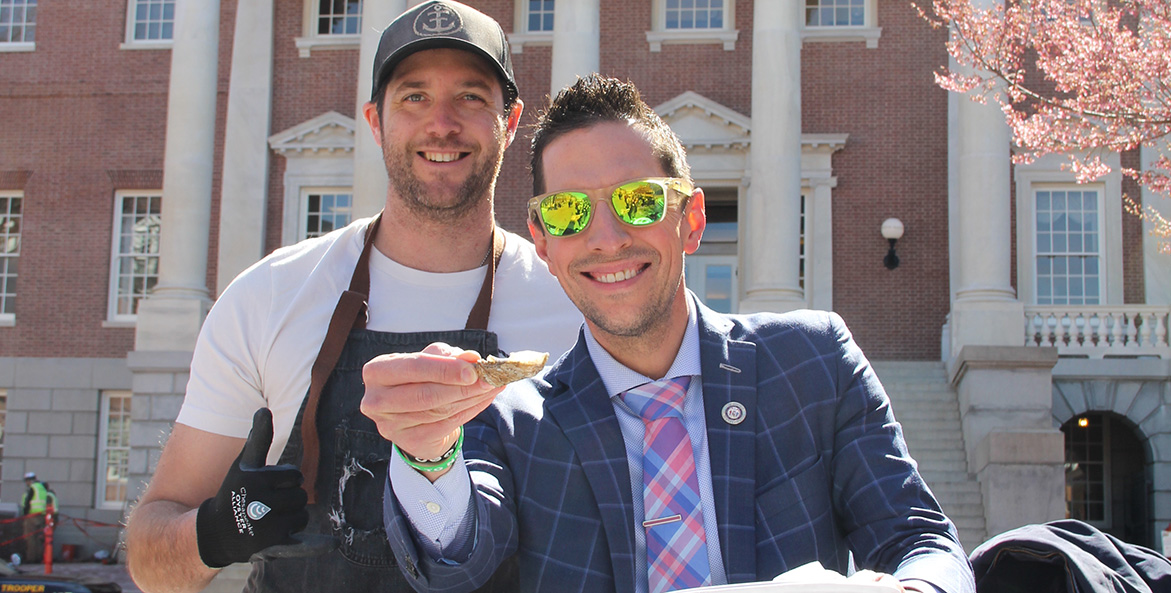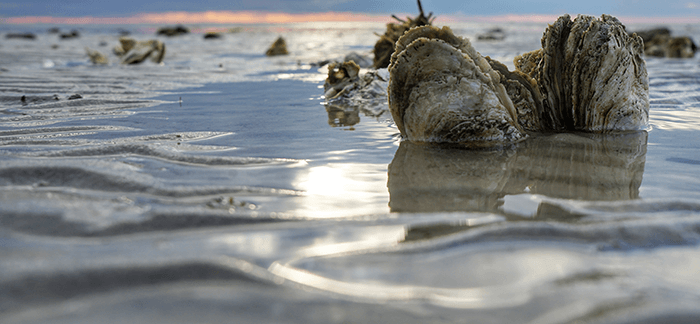Updated April 8, 2025
Maryland is at a critical point for the Chesapeake Bay and its waterways, seeking to continue moving forward on Bay restoration amid unprecedented budget challenges and a worsening outlook at the federal level.
Supporting a Bay-Focused Budget
With a looming $3 billion deficit, and uncertain federal funding, state legislators faced the important but unenviable task of crafting a balanced budget. We're thankful that they came to the same conclusion we did: Investments in clean water and air are investments in Marylanders—our health, our jobs, and our ways of life.
The Fiscal Year 2026 State Operating Budget passed on the final day of the General Assembly session and protects funding for:
- The Chesapeake and Atlantic Coastal Bays 2010 Trust Fund, which funds agricultural practices that reduce nutrient runoff into local waterways—the largest source of pollution flowing into the Bay;
- The Waterways Improvement Fund, which funds shoreline erosion control projects, removes abandoned and hazardous vessels, and supports marine sewage pump-out programs that protect Bay water quality; and
- The Clean Water Commerce program, which leverages a pay-for-performance model to reduce pollution and promote climate resiliency.
Additionally, drastic cuts that would have effectively ended Program Open Space (and other programs that preserve forests and agricultural land) were rejected in favor of more modest and targeted reductions. While not everything we would hope, CBF member advocacy helped ensure we have a budget that protects on progress on Chesapeake Bay cleanup and carries forward key programs that impact the Bay. This is an important win, but CBF will continue to track and engage on the state budget as Maryland continues to weather a period of fiscal uncertainty.
Creating a Shared “Bay Legacy”
At January’s Chesapeake Bay Program Executive Council meeting, Governor Moore announced that his administration would be introducing legislation to address some of the most pressing needs and recommendations identified in the May 2023 Comprehensive Evaluation of System Response (CESR) report. CBF worked alongside the administration and General Assembly to pass the Bay Legacy Act (SB 428/HB 506), which advance several critical Bay priorities:
- Promoting regenerative agricultural practices on state-owned lands;
- Uniting water quality monitoring programs under one state agency for better tracking and data quality; and
- Removing regulatory hurdles for Maryland’s growing oyster aquaculture industry
Being a Trusted Conservation Partner and Leading Through Science
Overall, 2025 was a mixed bag for the environment, with some important and impactful environmental policies coming closer than ever to enactment and some policies we disagree with passing. Some of the noteworthy bills and initiatives we have weighed in on include:
- The Nearshore Farm & Financing Act (SB 898/HB 1175): This legislation would have increased nutrient application setbacks near sensitive waters and provide additional incentives for farmers to plant trees and other natural filters that keep nutrient runoff out of our waterways. Unfortunately, the Nearshore Farm & Financing Act did not advance out of committee during the 2025 session, however we remain committed to including buffer planting incentives in other legislation.
- Opposing weaker penalties for oyster poachers (HB 893/SB 76). CBF members teamed up with fishery experts and former Attorney General Brian Frosh to oppose legislation that would have significantly weakened penalties for oyster poaching in protected sanctuaries. Thanks to CBF advocacy, the bill that ultimately did pass maintains tough, deterrent penalties for poachers while giving one-time offenders a second chance.
- Priority bills supported by the Citizens’ Campaign for the Environment, including:
- CHERISH Our Communities Act (SB978/HB1484) which more fully incorporates environmental justice considerations into permitting decisions at the Maryland Department of the Environment. The CHERISH Act failed to advance this year, but is likely to come back again in the future;
- Beverage Container Recycling Refund and Litter Reduction Program (SB346/HB232) which would establish a bottle deposit program for single-use beverage containers. This was another bill that very nearly passed and is likely to be reintroduced next session; and
- The Abundant Affordable Clean Energy Act (SB316/HB398) which invests in clean energy and protects ratepayers from rising energy costs. Many of the positive clean energy provisions in the ACCE Act and other bills were amended into a package of energy legislation put forward by legislative leadership.
Addressing Maryland’s Energy Needs
High energy prices, increased demand, and planning for Maryland’s future energy needs were top-of-mind issues during the 2025 session, and a major package of energy-focused bills sponsored by legislative leadership passed on the final day of session. The Next Generation Energy Act (HB1035/SB937) includes a number of provisions supported by CBF members, including canceling renewable energy subsidies for trash incineration and requiring utilities to justify spending on new natural gas pipelines. Other bills in the energy package create new statewide standards for siting solar energy projects (SB 931), while another creates a new state office for energy planning (SB 909).
These wins are tempered by other provisions of the package that, as introduced, would slow Maryland’s progress toward a clean energy future, including a focus on development of new natural gas energy projects. While the final package was an improvement over the original, it still provides incentives for gas power generation, and we will be watching closely to understand what impacts these far-reaching energy reforms will have on the Bay and our communities.
Celebrating the Bay through Oyster Lobby Day
In collaboration with the Chesapeake Oyster Alliance, CBF, our partners and our members welcomed members of the Moore-Miller Administration and the General Assembly to Lawyers Mall outside the State House to enjoy freshly shucked Maryland oysters. Featuring three different oyster farmers from throughout Maryland, this event is becoming a highlight of the legislative calendar and an important opportunity for CBF advocates to directly engage with legislators and relay the importance of clean water, clean air, and healthy ecosystems to Marylanders and our way of life.

Valerie DiMarzio/CBF Staff
Getting Involved
Defending clean water requires an “all hands on deck” response, and there are many ways for you to learn more or get involved—before, during, and after legislative session. Sign up for our Action Network to get the latest clean water news (including opportunities to hone your advocacy skills) and check out our advocacy tools and resources for more information on how you can advocate for clean water every day.


